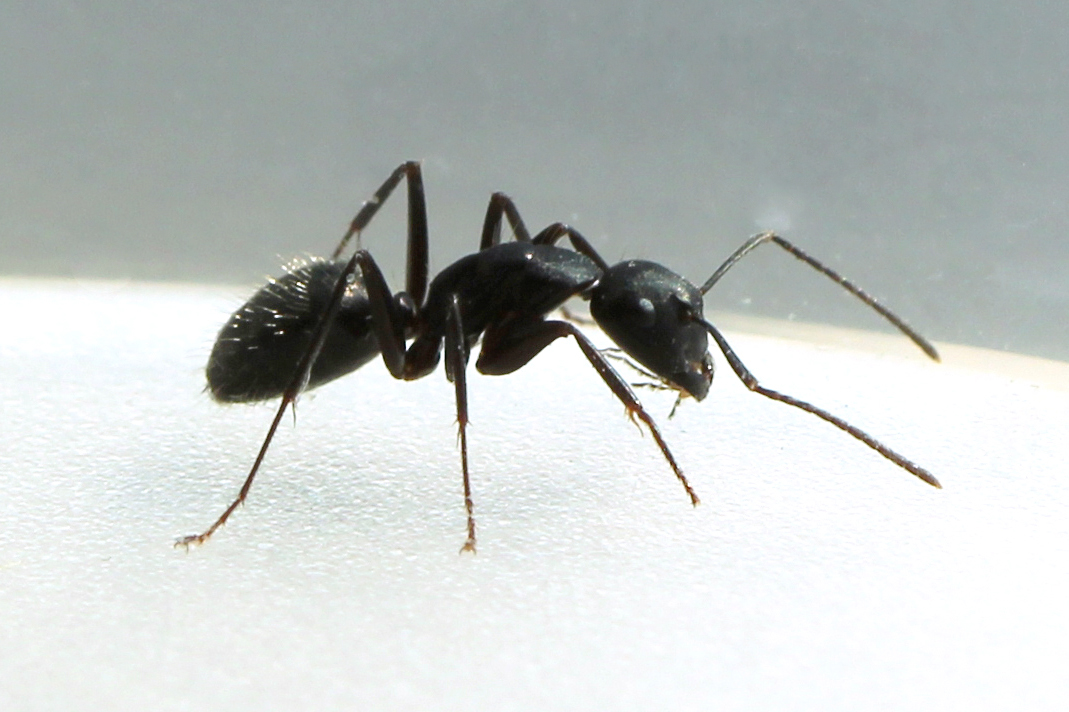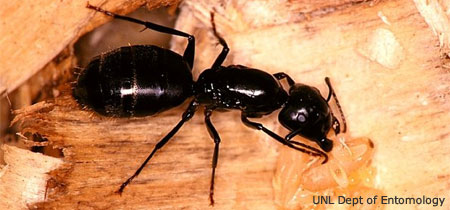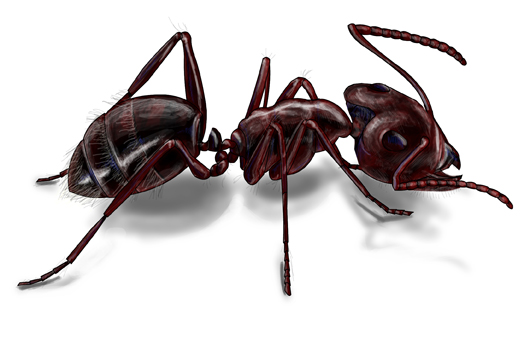Carpenter ant
Queen of a carpenter ant ( Camponotus spp.)
Carpenter ants ( Camponotus ) and wood ants are a genus of ants ( Formicidae ) of the subfamily of ants scales ( Formicinae ). Its members include the world at over 1,000 species, are in the Palearctic which at least 100 partially very large species.
Features
The antennae arise from well behind the Clypeushinterrand. The opening of the Metapleuraldrüse missing. In contrast to the wood ants the top of the thorax is uniformly curved without deeper notches.
The black carpenter ant ( Camponotus herculeanus ) and the brown black carpenter ant ( Camponotus ligniperda ) are the largest central European ants. They are up to 18 millimeters long. The plug head ant ( Camponotus truncatus ) has as its only native species in Germany on a Kastendimorphismus. Based in South East Asia Camponotus gigas is one of the largest ants in the world.
Way of life
The males and young queens of European species hibernate twice in the mother's nest; once as a larva and once as Imago. Only in the third year they leave the colony. It is striking that males often participate in the trophallaxis and brood care. Although referred to as carpenter ants, are not all native Camponotus species arboreal ( tree -dwelling ).
System
The following species are native to Central Europe (selection):
- Brown black carpenter ant ( Camponotus ligniperda ) ( Latreille, 1802)
- Haired wood ant ( Camponotus vagus ) ( Scopoli, 1763)
- Saddleback wood ant ( Camponotus lateralis) ( Oliver, 1792)
- Kerblippige carpenter ant ( Camponotus fallax ) ( Nylander, 1856)
- Black carpenter ant ( Camponotus herculeanus ) (Linnaeus, 1758)
- Plug head ant ( Camponotus truncatus ) ( Spinola, 1808)
- Camponotus aethiops ( Latreille, 1798)
- Camponotus piceus ( Leach, 1825)
Other non - European species (selection):
- Camponotus gigas ( Latreille, 1802)










